Loweswater
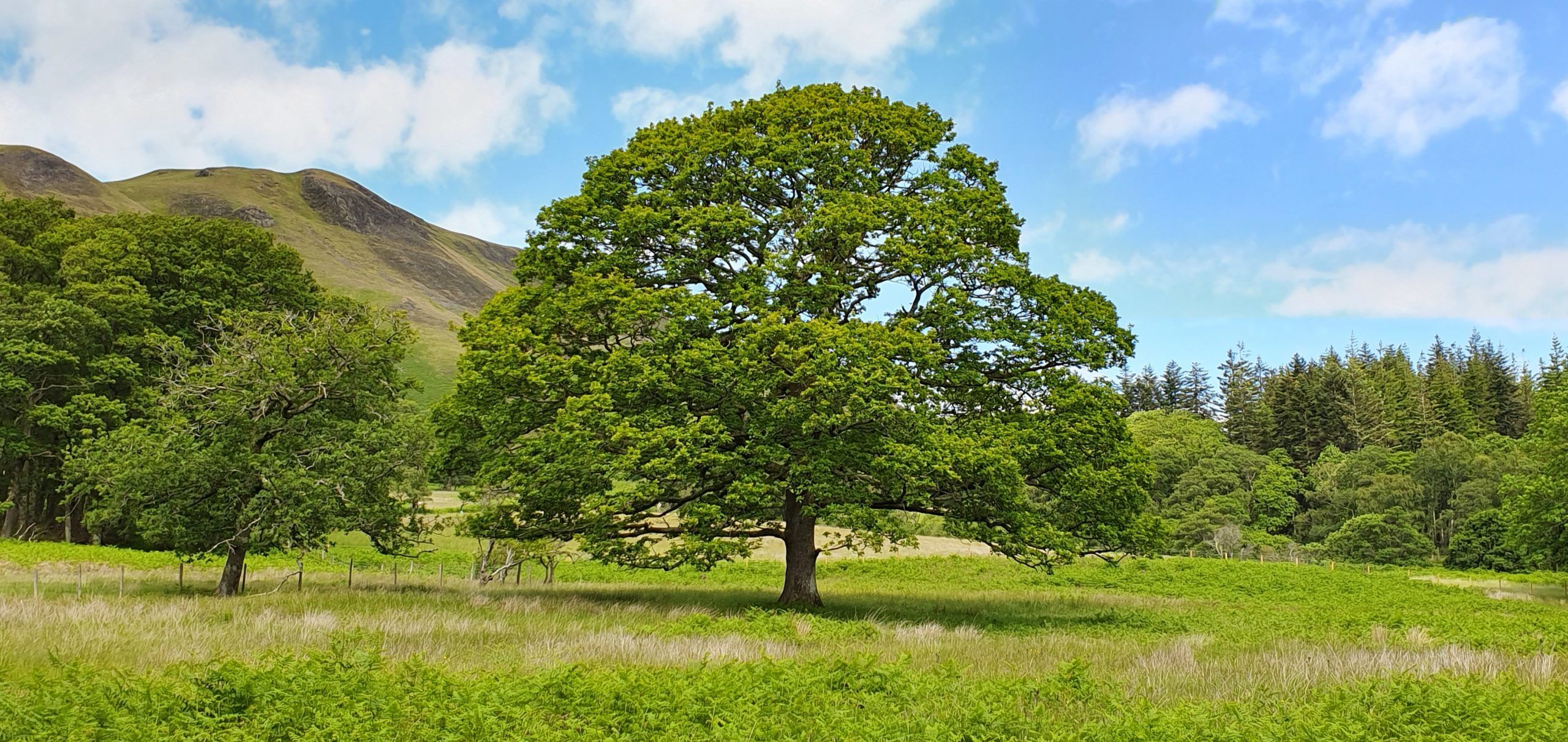
The 7 acres of wood pasture at Loweswater was purchased by the current Landowner, Liz Crocombe in 2019 when it came up for sale. Liz is a very keen conservationist and couldn’t resist the opportunity to save the wood pasture and surrounding oak woodland after having to watch it slowly demise for the last 20 years. Despite being an area of registered ancient woodland and within a stewardship scheme, the wood pasture and surrounding Sessile Oak woodland was in a degraded state because of long-term overgrazing by sheep, widespread tree felling, and removal of all the deadwood. Apparently, this had been going on for years, and was the log supply for the local pub!
Old maps from the 1890’s show the wood pasture to be present under the name Gill Carr, suggesting historically it was even wetter and contained more Willow than it does today. There is evidence of drainage channels in the wood pasture, as well as the watercourse (Gill) being moved, which appear to have been done for the surrounding Sessile Oak woodland. Presumably, there were grand plans for the wider woodland to be a charcoal coppice woodland, but it never happened, possibly due to the difficultly of the terrain and collapse of the charcoal industry.
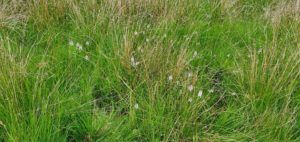
Despite the poor condition in early 2019, it was clear this was a very special habitat. Several very large crowned Sessile Oak trees were still standing, and despite overgrazing, the grassland within the wood pasture was a mosaic of unimproved marshy and acid grassland. Throughout Spring and Summer 2019, we rested the land completely from grazing, just to see “what pops up”, allowing all the wildflower species time to grow up and make themselves seen. I carried out a botanical survey of the wood pasture in early July, and recorded 90 species of wildflowers. The highlights were Heath-spotted Orchid Dactylorhiza maculata, Devil’s-bit Scabious Succisa pratensis, Pale Sedge Carex pallescens, and the endemic Montane Eyebright Euphrasia officinalis ssp. monticola which is a very rare wildflower restricted to a few upland grassland sites in the Lake District and North Pennines.
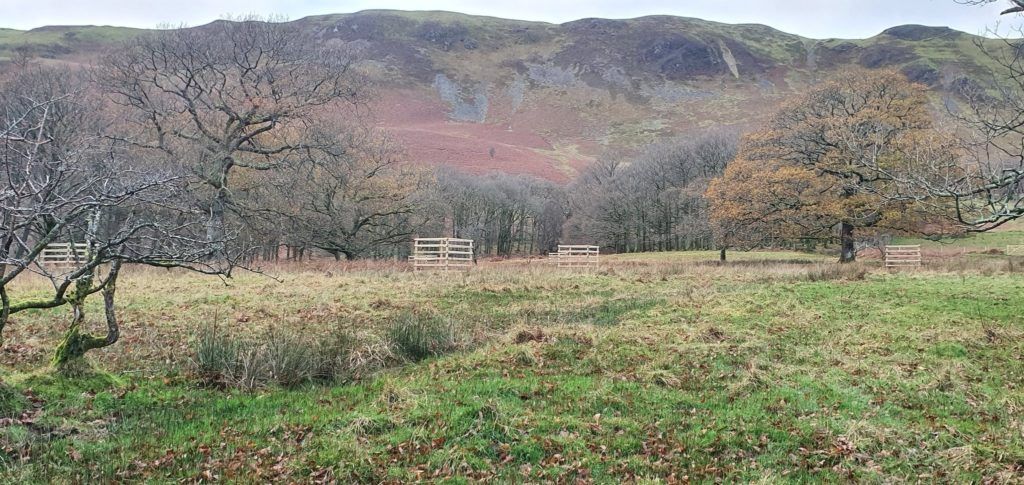
The birdlife was equally spectacular. By April, every tree had a male Tree Pipit setting out a territory, parachuting from the top of the canopy whilst in full song, into the grassland below. By May, the Pied Flycatchers and Redstarts had returned. To our delight the wood pasture turned out to be the battleground of several Cuckoo’s territories. I had seldom seen Cuckoos, mainly just hearing them, but here there were often 3 or 4 flying between trees either squabbling with each other, or being mobbed by the Tree Pipits. The wood pasture was alive with bird song from dawn until dusk, and became a magical place that felt a million miles away from the modern world.
With such a rich, important flora and birdlife, it was clear the wood pasture needed careful grazing management for these species to thrive. 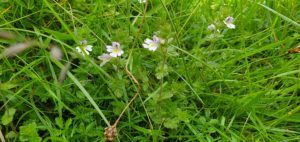 Eyebright in particular is a fussy species that can die out very quickly with under grazing. Any grazing between May and July would have destroyed Tree Pipit and potentially Cuckoo eggs. In Late Summer 2019, after all the wildflowers had set seed and birds had fledged, we introduced some Cattle to graze back the years growth. The target structure by the end of the grazing period is to have some areas of short, well-cropped grassland, with longer tussocks dotted around and the occasional patch of denser vegetation for insects and small mammals to hide away in. By October the cows had done their job, and the wood pasture is once again allowed to rest.
Eyebright in particular is a fussy species that can die out very quickly with under grazing. Any grazing between May and July would have destroyed Tree Pipit and potentially Cuckoo eggs. In Late Summer 2019, after all the wildflowers had set seed and birds had fledged, we introduced some Cattle to graze back the years growth. The target structure by the end of the grazing period is to have some areas of short, well-cropped grassland, with longer tussocks dotted around and the occasional patch of denser vegetation for insects and small mammals to hide away in. By October the cows had done their job, and the wood pasture is once again allowed to rest.
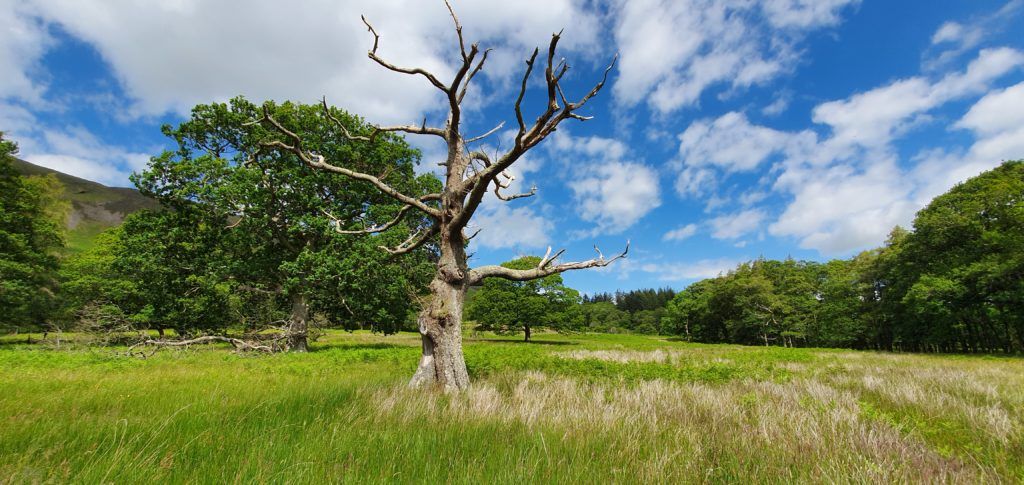
Despite a very successful year for the bounceback of wildflowers and birds, the one thing in the wood pasture that wouldn’t be restoring itself any time soon are the trees. There is a fairly heavy population of Roe Deer, and that combined with the Cattle grazing has meant any natural regeneration is soon grazed off. The trees are particularly special in the wood pasture as they are grand, with huge domed crowns and canopies. However, there are only about 8 of them left in healthy condition, and all are of a similar age and structure (roughly 200 years old). There are at least 2 dozen stumps of felled Sessile Oaks within the wood pasture.
We need to get the next generation of trees up and running, and the only way to do that in a grazed wood pasture is through tree cages. This Winter we have just added 25 tree cages with support from the Woodland Trust and Cumbria Woodlands, and these will be planted up with about 50% Sessile Oak, but also a good diversity of other species. Alder, Downy Birch and Goat Willow in the wetter areas, and Crab Apple, Wild Cherry, Bird Cherry and Silver Birch in the well-drained areas.
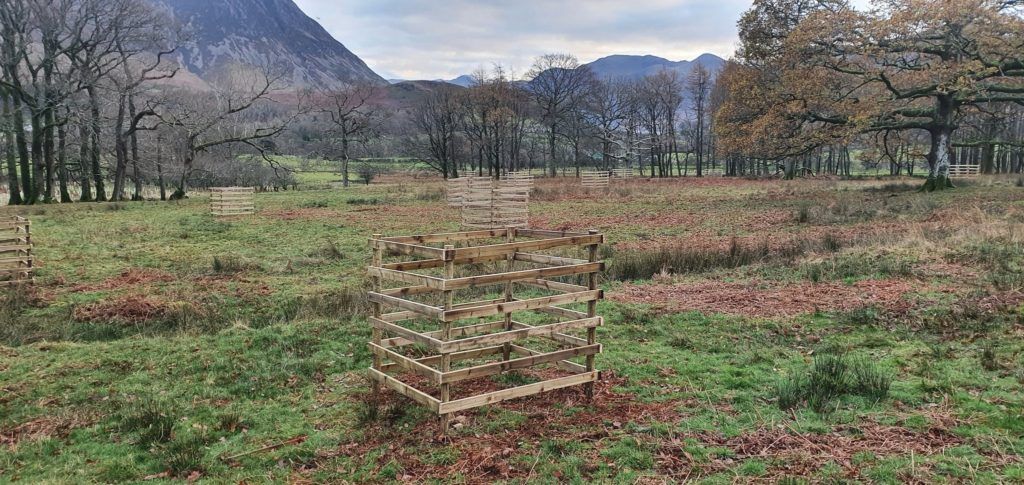
There is a large time gap to bridge between the old and new trees, but, with time, the next generation will be well on their way, and hopefully in another 100 years, the wood pasture will still be as vibrant and alive with wildlife as it is now. Without Liz, the fortune of this site could well have been very different. 8 felled trees later and this would have just been open grassland. Some herbicide and fertiliser and it would be transformed to improved agricultural land, with the trees, wildflowers and wildlife a distant memory. Thankfully things are in place so that never happens. We now have a long-term management plan in place, and lots of ecological parameters are being monitored annually so we are able to see how the site is changing.
Rob Dixon
Conservation Ecologist, Wild Lakeland

